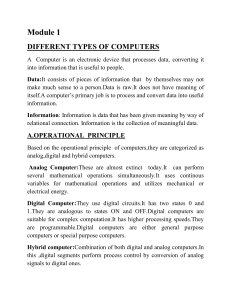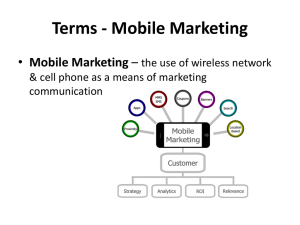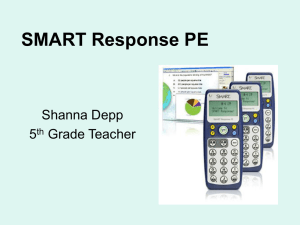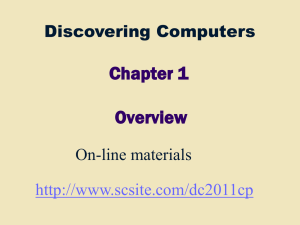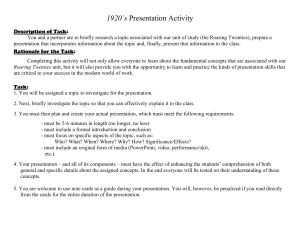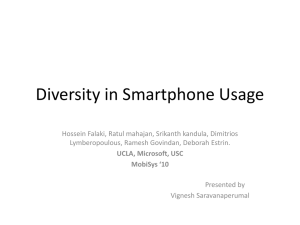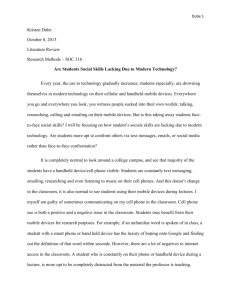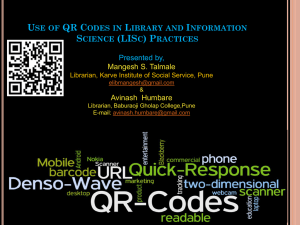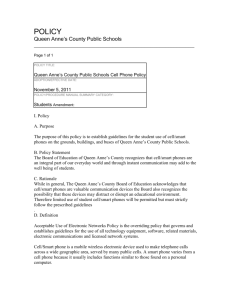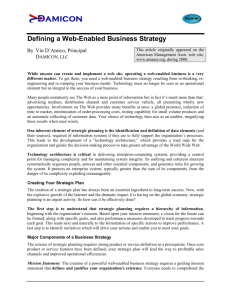Sending and receiving devices
advertisement
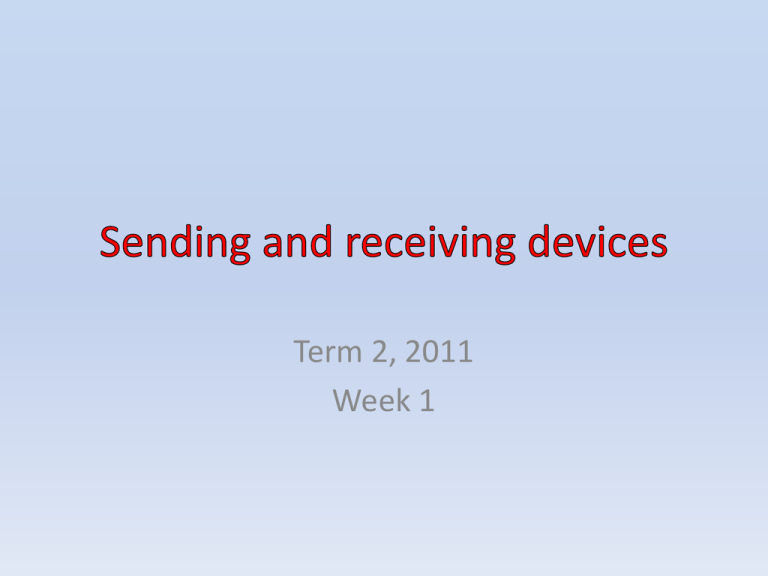
Term 2, 2011 Week 1 CONTENTS • Sending and receiving devices • Mobile devices connected to networks – – – – – – – Smart phones Personal digital assistants Hand-held computers Netbook Portable media players Navigation systems Digital cameras • Questions • Initiate or accept the transmission of data, instructions and information. • Notebook and desktop computers, TabletPCs, midrange servers and mainframe computers can all serve as sending and receiving devices. • Can communicate directly with another computer, with hundreds of computers on a company network or with millions of computers on the internet. • A web-enabled hand-held device also serves as a sending and receiving device. Provides access to the internet and email from any location. • Usually small enough to fit in a pocket. Devices store programs and data permanently on memory inside the unit or on a flash memory card. Usually able to be connected to a personal computer. • A number of mobile devices can be connected to the internet wirelessly allowing users to chat, send messages, email and access websites. Smart phones • Allows users to send emails and access the Web. Replacing Notebook computers for many business people due to them being lightweight and convenient. • Communicate wirelessly with other devices or computers. Can function as a portable media player and a digital camera. • Often include applications software (i.e. Spreadsheets, word processors). • Design of smart phones vary. • Have some limitations: small screens decrease amount of information which can be displayed at once, small keyboard affects ability to correctly enter data. • These limitations can be overcome to a degree. Most websites offer a simplified version of the page so it can be viewed on a smart phone, and smart phones often use auto-correct applications. • Most can directly connect to Bluetooth-enabled devices. • The increasing popularity of these devices cause an increase of traffic on networks. Personal digital assistants • Personal digital assistant (PDA) originally featured personal management tools (i.e. Calendar, appointment diary, calculator, address book). Now include application software. • Usually use a stylus but can also contain mini keyboard. • Limitations include: small screen size, limited battery life, limited memory to run applications. • Becoming difficult to distinguish between PDA’s and smart phones due to both being used for similar functions. Hand-held computers • Small enough to fit in the hand. • Communicate wirelessly with other computers and devices. Many have mini/specialised keyboards. • Often used by people who need to record data as they travel (i.e. Electricity and water meter readers). Netbook • Does not have all the features of a notebook computer. • Weighs about 1.4 kg, 25cm screen and a QWERTY keyboard which is 80-90% the size of a standard keyboard. • Some have hard-disk drive, others use a solid-state flash memory drive. • Flash memory is robust and less likely to suffer mechanical breakdown. However, more expensive and can slow computer. • Do not include an optical drive which ensures they remain small. • Lack a graphics card, therefore video performance can be poor. • Processor commonly has a speed of 1.66 GHz, compared to Notebook speed of 2.4 GHz. Portable media players • Stores, organises and plays digital media. • Usually connects to a computer from which the media is downloaded. Can include music, video, movies and photos. • Can be touch screen, and some media players are web-enabled. Navigation systems • The global positioning system (GPS) is a navigation system made up of at least 24 satellites that communicate with a device (fixed or portable) in a car or other vehicle. • Able to pinpoint the car’s location to within 50 metres, receives 3D data (latitude, longitude, altitude), and precise time. The car’s position is then overlaid with digital mapping. • The device then provides directions as well as locations of petrol stations etc. • Many phones now include GPS. Digital cameras • Photos are taken and stored digitally on a memory card. • Can view photos, delete or upload to computer (usually via a cable or memory card reader on computer). • Many smart phones and PDA’s come with digital cameras. Questions • What does web-enabled mean? What devices come with this capability? • What functions are available on a smart phone? • Briefly compare a Notebook to a Netbook. What the pros and cons of each? • Research and explain (in your own words) what the term ‘technological convergence’ refers to. Provide an example of a sending and receiving device that technological convergence applies to. What are the advantages of this? Are there disadvantages?
